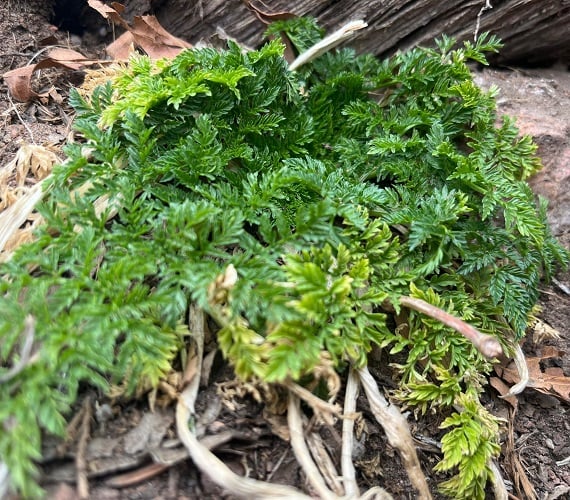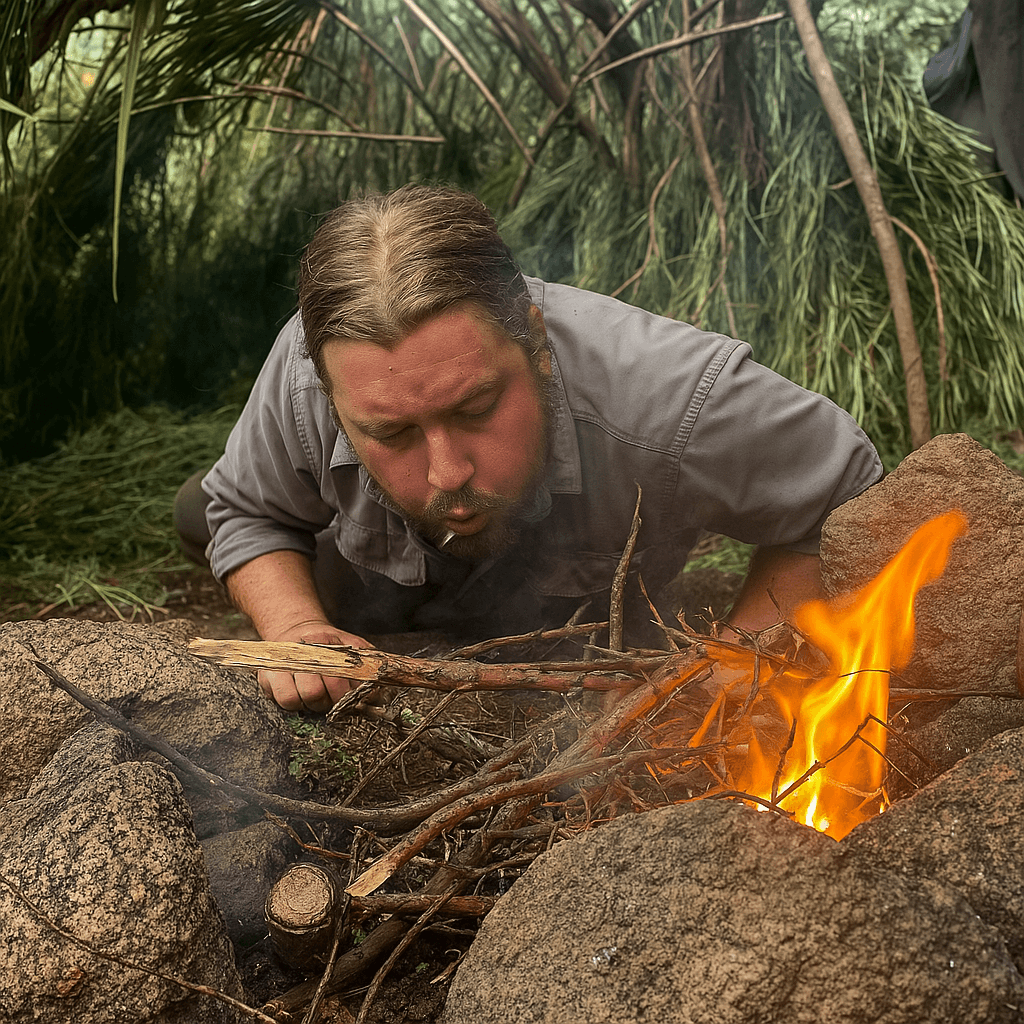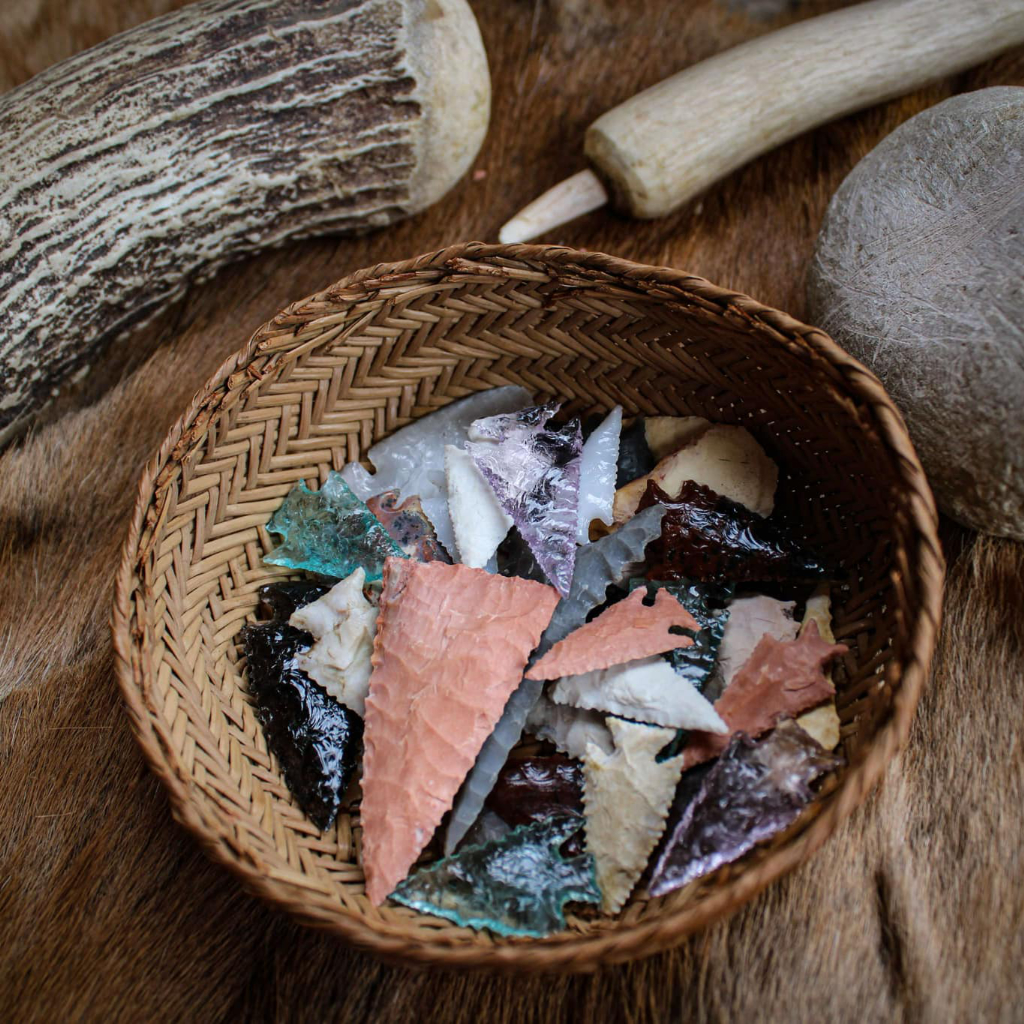Cart
15 min read
EAT THE WEEDS – POISON HEMLOCK

Poison Hemlock
Poison hemlock (Conium maculatum) as the name delineates, is a poisonous plant and should not be eaten. It is one of the deadliest plants in the Northern Hemisphere and ingesting a piece the size of your thumbnail can result in death in just a few hours. So why are we talking about it on our “Eat the Weeds” series?
Learning about poisonous plants is just as important as learning about edible plants because it helps you avoid accidental exposure to toxic plants. Since there are many plants that look similar to poison hemlock, this is not one that you want to misidentify or confuse with another. While edible plants provide nourishment and sustenance, poisonous plants can cause serious health problems or even death. By learning to identify and avoid poisonous plants, you can protect yourself and others from harm. Additionally, understanding the characteristics of both poisonous and edible plants can deepen your appreciation and knowledge of the natural world. For outdoor enthusiasts, knowledge of both types of plants is essential for wilderness survival. Finally, for farmers, gardeners, and landscapers, knowledge of both edible and poisonous plants is important for crop and livestock productivity.


Where Does It Grow?
Poison hemlock is a biennial plant that is native to Europe and North Africa but has since been introduced to other parts of the world, including North America, South America, and Asia. The plant prefers to grow in moist areas with well-drained soils, such as meadows, pastures, wetlands, riverbanks, disturbed areas and ditches. The plant is adaptable to a range of soil types and can tolerate both full sun and partial shade. However, it is most commonly found in open areas with plenty of sunlight.
Biennial means that it completes its life cycle over two years. Here is a brief description of the plant’s biennial growth cycle:
First year: In the first year, this plant grows a basal rosette of leaves that remain close to the ground. The leaves are pinnately compound, with numerous small leaflets that are finely divided. The plant stays in the rosette stage for the entire growing season, absorbing nutrients and building up energy reserves in its roots.
Second year: In the second year, it sends up a flowering stem that can grow up to 10 feet tall. The stem is smooth, hairless, and often has purple blotches or streaks. It is also hollow and has vertical ridges that are often covered in fine hairs. The stem branches out into umbels of small, white flowers, which can be mistaken for those of other plants in the carrot family.
Seed production and death: After the flowers are pollinated, it produces small, oval-shaped seeds that are gray-brown in color. The seeds ripen in the late summer or early fall and can remain viable in the soil for several years. After producing seeds, the plant dies, and the remaining stems and leaves turn brown and wither away.
Identify the Most Toxic Plant in the United States
Poison hemlock is a highly toxic plant that has become naturalized in many parts of the world. It can be difficult to identify, especially when it is young, but here are some key features that can help you recognize it:
Leaves

Poison Hemlock has fern-like leaves that are divided into small, lacy segments with each leaf consisting of several small, deeply lobed leaflets. The leaves are arranged alternately along the stem and have a shiny appearance. Young poison hemlock leaves have a similar appearance to adult leaves, with finely divided leaflets arranged alternately along the stem. However, young leaves may have a slightly more rounded shape and may not be as finely divided as older leaves.
Appearance: The leaves of are compound and deeply lobed, giving them a lacy or fern-like appearance. They are arranged alternately along the stem, with each leaf consisting of several leaflets.
Size: The leaves can vary in size depending on the age of the plant and the specific growing conditions. Generally, they range from 5-20 cm in length and are about half as wide.
Shape: Each leaf is made up of several small, ovate to lanceolate leaflets that are deeply divided into narrow, toothed segments.
Color: The leaves are typically a bright green color and have a shiny appearance.
Texture: The leaves are smooth to the touch.
Stem

The stem of poison hemlock is one of the key features that can be helpful in identifying the plant. It is smooth, hairless, and hollow with purple spots or blotches and can also have a slightly reddish tint. It can grow up to 2-3 meters (10 feet) tall.
Size: The stem can grow up to 3 meters (10 feet) tall.
Appearance: The stem is smooth, hairless, and has purple spots or blotches. The stem can also have a slightly reddish tint.
Texture: The stem is mostly hollow and has a rough texture that can feel slightly grooved or ridged to the touch.
Branching: The stem can be highly branched, with numerous side stems emerging from the main stem.
Leaves: The leaves are arranged alternately along the stem, with each leaf consisting of several small, deeply lobed leaflets.
Odor: When the stem is crushed or bruised, it emits a strong, unpleasant odor that can be described as musty or resembling mouse urine.
Flowers

Poison hemlock has clusters of small, white flowers that grow in umbrella-shaped clusters called umbels. The flowers have five petals and bloom from May to July.
Appearance: flowers are small, white, and arranged in umbrella-shaped clusters called umbels. The umbels can range in size from 3-8 cm in diameter and consist of numerous small flowers.
Petals: Each flower has five petals that are fused at the base, forming a cup-like shape.
Sepals: The flowers also have five small, green sepals that surround the base of the petals.
Stamens: Inside each flower, there are five stamens that produce pollen.
Ovary: The flower has a superior ovary with two carpels.
Blooming time: blooms from May to July, with the flowers appearing in early summer.
Smell: The flowers have a mild, sweet scent that is not unpleasant.
Root
The root of poison hemlock is a taproot that grows deep into the soil. The root can grow up to three feet long and is generally thick and fleshy, with a yellowish-white color. It contains a range of toxic compounds, including coniine, gamma-coniceine, and other alkaloids. These compounds can cause a range of symptoms, including nausea, vomiting, abdominal pain, tremors, seizures, respiratory failure, and death.
The root does not look like a store bought carrot but are similar to wild carrots. While both plants are in the carrot family and have similar-looking leaves, the roots of the two plants are quite different.
Poison Hemlock Root vs Wild Carrot Root

Size and Shape: Wild carrot roots are generally smaller and narrower than poison hemlock roots. Wild carrot roots are typically 1-2 cm (.5 – .75 inches) in diameter and up to 20 cm (8 inches) long, while poison hemlock roots can be up to 5 cm (2 inches) in diameter and up to 60 cm (24 inches) long. Poison hemlock roots are also usually more branched and have a more irregular shape.
Texture and Color: Wild carrot roots are typically light-colored (white or cream) and have a smooth texture, while poison hemlock roots are usually darker and have a more rough, woody texture.
Smell: Wild carrot roots have a characteristic sweet smell, while poison hemlock roots have a foul odor that has been described as resembling that of mice or parsnips.
Young poison hemlock can resemble several other plants, including wild carrot (also known as Queen Anne’s lace) and parsley. Therefore, it is always best to err on the side of caution and avoid touching or handling any unfamiliar plants until you can positively identify them. If you suspect that you have ingested poison hemlock, seek medical attention immediately.
If you are not sure whether a plant is poison hemlock or not, it is best to avoid touching or handling it and to seek advice from a qualified expert or authority on plant identification. It is important to be cautious as ingestion of any part of the plant can be extremely dangerous and potentially lethal.
Poison Hemlock Uses
Due to its toxicity, it is not commonly used for medicinal or other purposes. However, historically, there have been some reported uses of poison hemlock in traditional medicine, as well as some non-medicinal uses:
- Medicinal: Poison hemlock has been used in traditional medicine for various purposes, including as a sedative, pain reliever, and anti-inflammatory. However, its use for medicinal purposes is highly discouraged due to its extreme toxicity.
- Horticultural: Some gardeners have used poison hemlock as an ornamental plant due to its tall, attractive appearance. However, due to its toxicity, it is not recommended to plant or handle poison hemlock.
- Pesticidal: In some cases, poison hemlock has been used as a natural pesticide to control certain pests. However, this is not a recommended or safe use of the plant.
Due to its extreme toxicity, it is best to avoid using poison hemlock for any purpose and to take precautions to prevent accidental ingestion or exposure.
Poison Hemlock Precautions
Eating poison hemlock can be extremely dangerous and even deadly. Poison hemlock contains several potent toxins, including coniine and gamma-coniceine, which can affect the nervous system and lead to paralysis, respiratory failure, and death. All parts of the plant, including the leaves, stems, flowers, and roots, are poisonous if consumed or handled improperly. Therefore, it is essential to be cautious when identifying and handling this plant. If you suspect that you have ingested poison hemlock, seek medical attention immediately.

Here are some of the symptoms that may occur after eating poison hemlock:
- Nausea and vomiting
- Abdominal pain and cramps
- Diarrhea
- Sweating
- Weakness and dizziness
- Rapid heartbeat
- Difficulty breathing
- Muscle tremors and twitching
- Seizures
- Coma
In severe cases, eating even a small amount of poison hemlock can result in death within a few hours due to respiratory failure or paralysis of the heart.
I have heard that caffeine can be used as a antidote or to slow down the effects but there is no scientific evidence that this is true . While caffeine is a stimulant that can help improve alertness and reduce fatigue, it has no direct effect on the toxins in poison hemlock or the symptoms of poisoning. Consuming caffeine along with poison hemlock may exacerbate symptoms such as rapid heartbeat and muscle tremors.
If you suspect that someone has eaten poison hemlock, it is important to seek medical attention immediately. There is no known antidote for poison hemlock poisoning, and treatment generally involves supportive care to manage symptoms and prevent complications.
Plants That Resemble Poison Hemlock
Several plants can resemble poison hemlock, which can make it challenging to identify the plant correctly. While there are more, here are some plants that may be mistaken for poison hemlock:

Queen Anne’s lace (Daucus carota):
This plant is often mistaken for poison hemlock because it also has small, white, umbrella-shaped flowers. However, Queen Anne’s lace has a hairy stem and smells like carrots when the leaves are crushed, whereas poison hemlock has a smooth, hairless stem with purple blotches and a musty odor.
Water hemlock (Cicuta spp.):
Water hemlock is another highly toxic plant that can be mistaken for poison hemlock. Both plants have umbrella-shaped clusters of small, white flowers, but water hemlock has a hollow stem that is covered in fine hairs and does not have purple blotches. The leaves of water hemlock are not as fernlike. Water hemlock is considered to be one of the most poisonous plants in North America and can cause convulsions and death within a few hours of ingestion.
Cow parsnip (Heracleum maximum):
Cow parsnip is a tall perennial herb that can grow up to 8 feet (2.4 meters) tall, with a thick, hairy stem that is often purple-spotted. The leaves of the cow parsnip are large and deeply lobed, resembling maple leaves, and can reach up to 2 feet (60 cm) across.
The flowers of cow parsnip are white and arranged in umbrella-shaped clusters that can be up to 1 foot (30 cm) across. They bloom from June to August and are followed by round, flat-topped, seed heads that can reach up to 3 inches (7.6 cm) in diameter.
Cow parsnip is found in moist, open areas such as meadows, streambanks, and wetlands, throughout much of North America, including Alaska, Canada, and the United States. It is an important source of food for wildlife, including deer, elk, and moose, and its young shoots and roots have also been used as food by some indigenous peoples. However, cow parsnip contains phototoxic compounds that can cause skin irritation and blisters when exposed to sunlight, so it should be handled with care.
The Carrot Family

Poison hemlock belongs to the family Apiaceae, which is also known as the carrot family or umbellifers. The Apiaceae family includes many other plants that are used for food, medicine, and ornamental purposes, including carrots, parsley, dill, fennel, and coriander. However, some plants in the family, including poison hemlock and water hemlock, are highly toxic and can be dangerous if consumed or handled improperly.
The carrot family, also known as the Umbellifers, is a large and diverse group of plants that includes more than 3,700 species worldwide. The family is named after the genus Apiaceae, which includes plants that are commonly used for food, medicine, and ornamental purposes, such as carrots, celery, parsley, and fennel.
Plants in the carrot family typically have several distinctive features, including:
- Umbel-shaped flowers: The flowers of most Apiaceae plants are arranged in umbrella-shaped clusters, called umbels. Each umbel has a central stem that branches out into several rays, which support smaller umbels of flowers.
- Hollow stems: Many Apiaceae plants have hollow stems that are grooved or ridged, which help to differentiate them from other plant families.
- Alternate leaves: The leaves of Apiaceae plants are typically arranged alternately along the stem and are often deeply divided or compound.
- Aromatic compounds: Many Apiaceae plants have aromatic compounds in their leaves, stems, and flowers, which give them their characteristic flavors and scents.
While many plants in the Apiaceae family are used for culinary or medicinal purposes, some species are highly toxic and can be dangerous if consumed or handled improperly. For example, plants like poison hemlock, water hemlock, and fool’s parsley contain toxic compounds that can cause serious illness or death. It is essential to be cautious when identifying and handling plants in this family.
Poison Hemlock vs Wild Carrot

Poison hemlock and wild carrot are two plants that can look very similar, especially in the early stages of growth. However, there are several key differences between these two plants that can help you tell them apart:
Leaves: Poison hemlock leaves are lacy and fern-like, while wild carrot leaves are more feathery and have a distinctive hairy texture.
Stems: Poison hemlock stems are smooth and hairless, with purple spots or blotches on them, while wild carrot stems are hairy and have a green or sometimes purple color.
Flowers: Poison hemlock flowers grow in clusters at the top of the stem and are small and white, while wild carrot flowers are larger and have a distinctive flat-topped shape with a cluster of small white flowers in the center.
Smell: Wild carrot has a characteristic sweet smell, while poison hemlock has a foul odor that has been described as resembling that of mice urine or parsnips.
Root: As mentioned previously, the root of poison hemlock is typically larger and darker with a woody texture and a foul smell, while the root of wild carrot is typically lighter and smoother with a sweet smell.

To sum it up, poison hemlock is a highly toxic plant that should be avoided at all costs. While it may resemble some edible plants such as wild carrot or parsley, its toxic effects can be deadly. Symptoms of poisoning include nausea, vomiting, confusion, muscle weakness, and respiratory failure, which can lead to death. Therefore, it is essential to be able to correctly identify poison hemlock and take precautions to avoid exposure. If you suspect that you or someone else has ingested poison hemlock, seek medical attention immediately. Overall, it is always better to be safe than sorry when it comes to poisonous plants, and awareness and education about these plants can go a long way in preventing accidental poisoning.
Did you like these survival tips? Check out more tips and trick on our Wilderness Survival Tips page.
If you are looking for hands on training to learn more about wilderness survival and want to take months if not years off of your learning curve, I suggest you check out our 5 Day Outdoor Survival Basics 101 class!
#survivalskills #survivalgear #wildernessculture #outdooreducation #wildernesssurviva
Leave a Comment
Lightning, Hunting, and the Harsh Lessons of the Mountains
When two hunters in Colorado, Andrew Porter and Ian Stasko, recently lost their lives during a lightning storm, it shook the hunting community. If you...
- survival training
- lightning strikes
- survival skills
- hunter education
- risk management
- nature safety
- weather awareness
- camping safety
- hiking safety
- outdoor education
- lightning safety
- mountain safety
- Colorado hunting
- electrical storms
- thunderstorm awareness
- outdoor safety
- wilderness survival
- backcountry safety
- storm preparedness
- hunting safety
What Nash Quinn’s Disappearance Teaches Us About Being Ready for the Backcountry
Nash Quinn vanished on a routine ride near Laramie. His story is a powerful reminder of why preparation, communication, and humility in the outdoors matter...
Recommended Gear List For Courses
Colorado is a cold weather climate most of the year and with our survival school at 9400 feet, it can get frigid at night, even…
Survival Training Near Me: Why the Best Might Be Worth the Trip
Discover why the best survival training might mean leaving the city. Explore The Survival University’s 4000+ acres and 20+ expert instructors!
Bugging In Guide Part 1: Drain Your Water Heater
Learn how to access hidden water in your home by safely draining your water heater during emergencies. A must-read for urban survival and bugging in.
Flint Knapping for Beginners: My Hilarious Failures & How to Do It Right
Flint knapping sounds easy—until you try it. Here’s my journey of frustration, flying shards, and why some people (but not me) make it look effortless.










